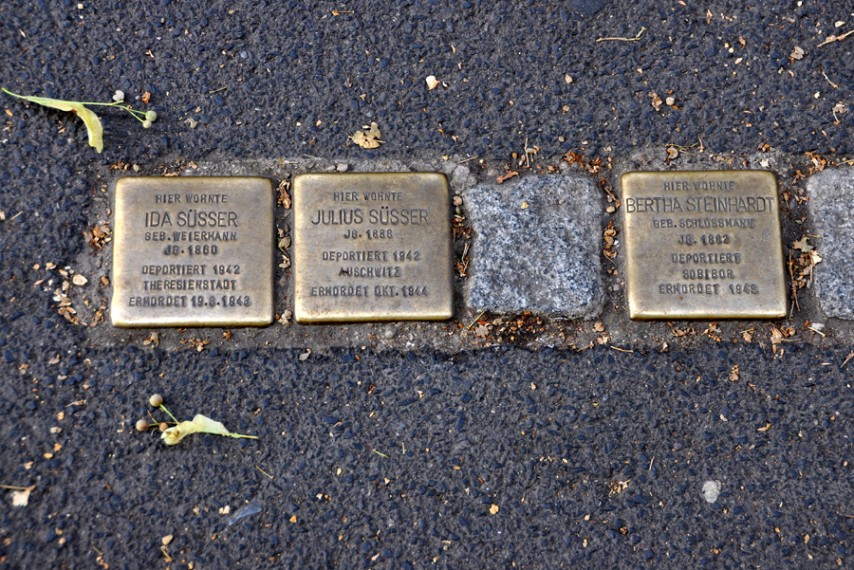
Yes, I know that as a general rule, all headlines that end with a question-mark can be answered with "No", but bear with me here, something is off. It's likely that, just like the KIA cannes "pedo" ad story last year (fishy start, culprit spotted, upset creatives demanding retractions, and final removal of award) we are likely to learn much more as time goes by.
Here's what I know today. Jung von Matt won both a Gold Lion in media and a Bronze Lion in integrated for this Stones idea, which Meedia.de calls it "Jung von Matt's Holocaust Sham". There's details in the case study that simply don't correspond to what went on in the real world says Meedia. Here, my very poor translation from German of Meedia making their case:
The inconsistencies in the case study appear in the following order:
- In the movie, the judges see a website on which the stones are pinpointed on a map. Supposedly you can get at every stone detailed background information and pictures. If for example, the name Siegfried Salomon appears on the website, you'll find neither photos nor a biography. A fake, it's is also unclear whether the photograph shows even the street Susannenstraße 6 in Hamburg Schanzenviertel, from where Siegfried Salomon was deported.
Hang on, so Meedia are saying that the subjects shown in the case study don't actually exist on the real site?
Stones Telling Stories - Online Holocaust Museum
Meedia continues to pick the case study apart:
- On the campaign Web site, the locations of the stones is far from complete (at least compared with the Chronicle / technology on the official site stolpersteine.com ). It seems as though the team of Jung von Matt hurried to finish in time for submission to the Cannes Festival, and tried to suggest in the film case study what the final product might look like instead of what's actually there.
- The film claims that a web user "stumble on the stones" on Google Maps. This is also not true. The stones are not even on Google Maps locates. And not on Google Street View either, as explained in the film as case falsely. "With one click, the victims are alive again," it says in the film. Also in: fake, since Street View does not provide the functions described and shown twice in the case study, the "biography" of Siegfried Salomon exists in the form shown not clicking on a popup: "No photo available" The Truth: A detailed site about the stones has been around for a long time, created by the City of Hamburg ( stolpersteine-hamburg.de). Here you can find biographies and background information on the victims, and much more. These efforts haven't been done for the award-winning site created by Jung von Matt. And the app, which also appears in the film, was well known, given by the City of Hamburg commissioned and implemented - its wasn't from the advertisers. In the case of the film impression is given that this app would be the performance of Jung von Matt, and in the context of an integrated campaign was developed.
- Who's news clipping in the case closer look at film, will quickly find that do not take the press articles relating to the digital pitfalls (namely that there is not) but on each new stumbling blocks of the artist Gunter Demnig. Is it any wonder, if the imprint of the site https://stolpersteine-online.com as the consultant in charge of the advertising agency and the address of the agency shows up and not the alleged principal Demnig. The fact has its own website: stolpersteine.com of this is not even related to the JvM page.
What do you think, overambitious case study "fixing" a few things that hadn't run in prime time yet, a bit like the Lullalland.net "client presentation" fib, or blatant Award-stealing lie?
Horizont.net now reporting on the "Stones story", they've spoken to the artist Gunter Demnig about it.
- reply
Permalink